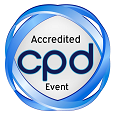
Miroslav Ryska
QUINTA-ANALYTICA , Czech Republic
Title: Can “Matrix effect†in LC/MS or LC/MS/MS assay be avoided or fully compensated
Biography
Biography: Miroslav Ryska
Abstract
The source of the Matrix effect as a consequence of analyte ions suppression or ions enhancement must be sought in the presence of unknown impurities from matrix. These impurities can be regarded as Brønsted bases or acids. They are participating in the complex ionization process in parallel or competing ion-molecular reactions. Not only impurities from extracts but impurities adsorbed in the ion source and/or in the analytical system may play an important role in the extensively understood term “Matrix effects“. These adsorbed substances cannot be fully removed from the system by any cleaning procedure. On the other hand, this effect may be effectively used in the sensitive method of the determination of some drugs (e.g. lacidipine). To fully compensate for the negative impact of the “Matrix effect“, use of isotopically labeled internal standards (isotope dilution technique) proved to be the only effective technique. This applies especially to LC/MS/MS determination of drugs and their metabolites in complex extracts of biological matrices. The isotope dilution technique is successful regardless of the method of purification, the ionization technique (APCI or ESI in both positive and negative ion modes), and the type of the equipment used. In addition, the quality of isotopically labeled internal standards (with respect to the kinetic isotope effects dependent on the number of deuterium atoms present) is not crucial either. The isotope dilution technique proved to be 100% effective for the compensation of matrix effect influences in more than 100 analytical methods developed and validated. The strict requirements of EMEA guidelines to investigate different plasma sources for the assessment of the matrix effect in the analytical method validation are discussed further within this context.

